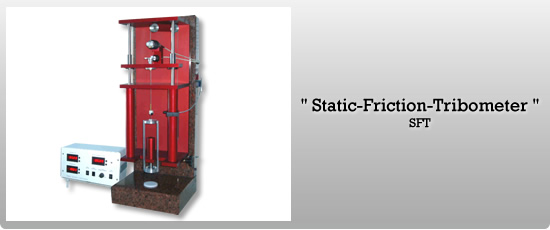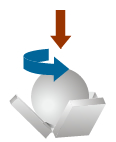The Static-Friction Tribometer

The Static-Friction-Tribometer was developed especially for the investigation of static friction processes.
In contrast to the usual tribometers, the torque is applied extremely slowly via a soft spring torsion wire, so that the static friction can be determined with high accuracy. The twisting of the wire is indicated optically by means of a laser beam deflected by a mirror attached to the spring wire. The frictional torque is recorded digitally.
The specimen arrangement ball on three platelets allows the examination of almost any material. This can be done dry or lubricated.
For plastics, specimens are usually prepared from standard tensile bars. For steel counterbodies, the typical Bosch vane cell plates are used.
| Test bench parameters | ||
| Sliding speed | 0.1 to 100 mm/min and 1 to 12,000 mm/min (2 motors) | |
| Load | 5 to 100 Newton | |
| Temperature | -10 °C to 80 °C | |
| Measurement parameters | Frictional force, sliding speed, normal force | |
| Movement type/shape | Glide (continuous) | |
| Friction conditions | Dry friction, mixed friction | |
| Contact geometry | 3-point touch (ball / 3 tiles) |
Other tests
- Determination of the static friction coefficient as a function of the materials and lubricants used
- Determination of static friction coefficient and stick-slip behavior as a function of sliding speed
- Determination of the breakaway torque as a function of the downtime
Possible specimen geometries

